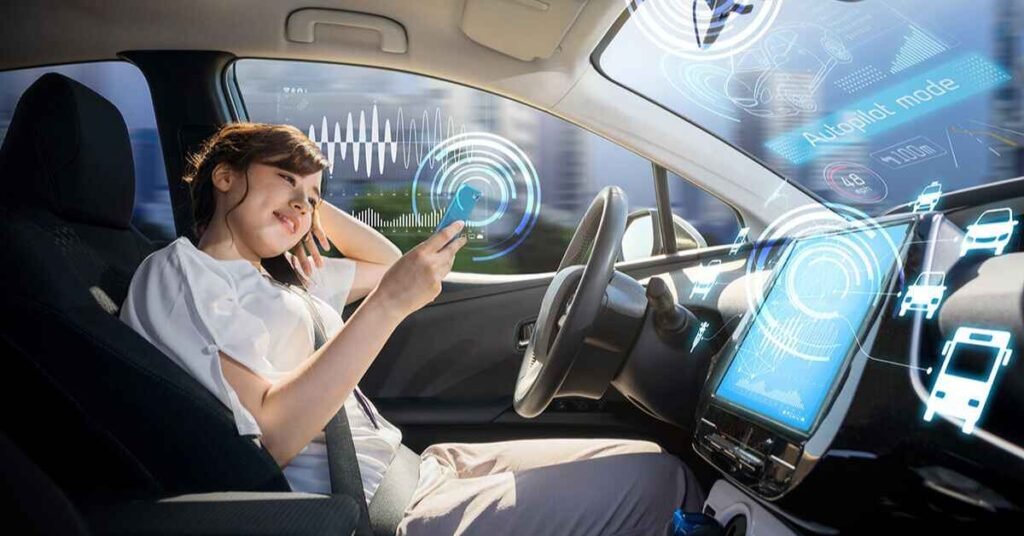Table of Contents
The Evolution of Taipei Self-Driving Gharry
The gharry, a horse-drawn carriage, has long been a symbol of Taiwan’s rich cultural heritage. Historically, it was used as a primary mode of transport for the elite and gradually became accessible to the general public. This iconic vehicle represents a bridge between Taiwan’s past and present, showcasing the evolution of urban mobility.
In Taipei, the gharry is more than just a means of transport; it’s a piece of living history. The self-driving gharry retains this cultural significance, offering an experience that merges nostalgia with innovation. By transforming the traditional gharry into an autonomous vehicle, Taipei preserves this historical treasure while adapting to modern needs.
In recent years, Taipei has embraced technology to revolutionize urban transportation. The self-driving gharry project integrates autonomous driving systems into these classic carriages, creating a unique blend of heritage and innovation. This project not only modernizes the gharry but also maintains its charm and cultural essence.
These self-driving gharries are designed to look like traditional carriages, complete with curved roofs and intricate woodwork. However, beneath this exterior lies cutting-edge technology. By incorporating advanced sensors, cameras, and electric motors, Taipei has successfully propelled the gharry into the future, making it a symbol of the city’s commitment to innovation.
Technology Behind the Self-Driving Gharry
At the heart of Taipei Self-Driving Gharry is Artificial Intelligence (AI) and Machine Learning (ML). These technologies act as the brain of the gharry, allowing it to make real-time decisions while navigating the busy streets of Taipei. AI processes vast amounts of data collected from various sensors to understand the environment, such as detecting pedestrians, interpreting traffic signs, and predicting potential obstacles. Machine learning algorithms continuously improve the gharry’s performance by learning from each journey it takes, making it smarter and safer over time.
AI and ML enable the gharry to adapt to different traffic conditions and routes. This adaptability ensures a smooth and efficient ride for passengers, even in complex urban environments. The integration of these technologies not only enhances the operational efficiency of the self-driving gharry but also significantly contributes to its safety features, providing a reliable transportation option for residents and visitors alike.
LiDAR (Light Detection and Ranging) is a crucial component of the self-driving gharry’s navigation system. It uses laser pulses to create detailed 3D maps of the surroundings, allowing the gharry to detect objects up to 200 meters away with high accuracy. This “sight” allows the vehicle to perceive obstacles, other vehicles, and pedestrians, ensuring it can navigate safely even in challenging conditions like darkness or fog.
Complementing LiDAR, an array of sensors and high-definition cameras serve as the gharry’s eyes and ears. The cameras read traffic signs, detect lane markings, and even interpret pedestrians’ body language. Together with radar and ultrasonic sensors, these systems provide a comprehensive view of the vehicle’s environment, ensuring a smooth and safe journey for passengers. This combination of technologies allows the gharry to navigate complex urban landscapes with precision.
Benefits of Self-Driving Gharries in Taipei
Taipei Self-Driving Gharry gharries offer a convenient and efficient mode of transportation in Taipei. They help alleviate traffic congestion by optimizing routes using real-time traffic data, allowing for smoother travel. These autonomous vehicles operate with precision, minimizing human errors such as sudden stops or unnecessary lane changes, which can lead to traffic jams. As a result, they contribute to a more organized flow of traffic, reducing overall travel times for commuters.
Additionally, self-driving gharries reduce the need for personal vehicles, lessening the burden on parking infrastructure in the city. This convenience extends to passengers, as they can easily book a gharry using a dedicated mobile app or at designated pick-up points throughout Taipei. The system offers a hassle-free experience, making it a preferred choice for both locals and tourists looking for an innovative and comfortable way to travel.
Taipei’s self-driving gharries are designed with sustainability in mind. They are powered by electric motors, which significantly reduce their carbon footprint compared to traditional fuel-powered vehicles. By using clean energy, these gharries contribute to improved air quality in Taipei Self-Driving Gharry, supporting the city’s efforts to become more environmentally friendly. Furthermore, they incorporate regenerative braking systems, which capture and convert energy during deceleration into electricity, enhancing their efficiency.
The use of self-driving gharries promotes a greener urban environment, aligning with global efforts to reduce emissions and combat climate change. By offering an eco-friendly transportation option, Taipei sets an example for other cities looking to integrate modern technology with environmental consciousness. This initiative not only provides practical benefits for daily commuting but also reflects a commitment to a sustainable future.
User Experience and Accessibility Features
The user experience of Taipei Self-Driving Gharry is designed to be seamless and intuitive. Passengers can easily book a ride through a mobile app, which provides details on available gharries, estimated wait times, and routes. Once a booking is made, the gharry arrives at the designated pick-up point. Boarding is simple and straightforward, with wide doors and a low step-in height to accommodate all passengers, including those with mobility challenges.
Inside the gharry, passengers are greeted with a comfortable and spacious interior. The onboard system provides information about the journey, including estimated time of arrival and key landmarks along the route. The interface is user-friendly, with touch-screen controls for selecting destinations and accessing additional services. This level of ease and comfort makes the self-driving gharry an attractive transportation option for people of all ages and abilities.
Accessibility is a key feature of the self-driving gharry. It is designed to cater to passengers with varying needs, ensuring an inclusive transportation experience. The gharry is equipped with wheelchair-accessible ramps and wide entryways, making it easy for individuals with mobility impairments to board and disembark. Additionally, the interior provides ample space for passengers who require assistance devices, such as walkers or crutches.
Comfort is also a priority, with plush seating and a smooth ride guaranteed by the vehicle’s advanced suspension system. Large windows offer panoramic views of Taipei’s cityscape, enhancing the travel experience. For passengers with sensory impairments, audio and visual aids are available to provide journey updates and safety information. This thoughtful design ensures that everyone, regardless of physical ability, can enjoy a comfortable and accessible ride.
Exploring Taipei with Self-Driving Gharries
The self-driving gharry offers a unique way to explore Taipei, providing curated tours and routes that showcase the city’s rich culture and history. Passengers can choose from a variety of tours that take them through iconic landmarks, bustling night markets, and serene parks. These routes are designed to offer an immersive experience, allowing passengers to take in the sights and sounds of Taipei Self-Driving Gharry from the comfort of their carriage.
Interactive displays and audio guides are available onboard to provide insights and stories about each destination. This feature transforms the gharry into a mobile tour guide, enriching the travel experience with cultural and historical context. Whether it’s exploring the vibrant streets of Ximending or taking a leisurely ride through Daan Forest Park, the self-driving gharry offers an engaging way to discover Taipei.
The introduction of self-driving gharries has added a new dimension to Taipei’s tourism scene. These autonomous carriages attract both locals and visitors with their blend of tradition and technology. Tourists can experience the charm of a historical gharry ride while enjoying the convenience and safety of modern autonomous vehicles. This fusion of old and new creates a memorable experience that highlights Taipei’s commitment to preserving its heritage while embracing innovation.
By offering an accessible and eco-friendly way to explore the city, Taipei Self-Driving Gharry appeal as a travel destination. They provide a unique mode of transportation that is both educational and entertaining, allowing visitors to see the city from a different perspective. This innovative approach to urban mobility not only boosts tourism but also showcases Taipei’s cultural richness and technological prowess.
Challenges and Future Developments
While self-driving gharries offer numerous benefits, cybersecurity is a major concern. As these vehicles rely heavily on interconnected systems and real-time data processing, they are vulnerable to cyber-attacks. To mitigate this risk, robust security measures are implemented, including state-of-the-art encryption protocols and firewalls. Regular software updates and security audits are conducted to identify and address potential vulnerabilities, ensuring passenger safety and data privacy.
The gharries are also equipped with redundant systems and failsafe mechanisms. In the event of a cyber-attack or system failure, these safeguards ensure that the vehicle can safely come to a controlled stop or transfer control to a human operator. By prioritizing cybersecurity, the developers of Taipei Self-Driving Gharry aim to build public trust in this innovative mode of transportation.
Looking ahead, Taipei has ambitious plans to expand the self-driving gharry project to other cities and regions. By integrating these autonomous vehicles into a broader smart city framework, the city aims to create a more efficient and cohesive urban mobility ecosystem. Future developments may include vehicle-to-infrastructure communication, allowing gharries to interact with traffic signals, parking systems, and other elements of city infrastructure.
Advances in artificial intelligence, machine learning, and sensor technology will further enhance the capabilities of self-driving gharries. These improvements will enable the vehicles to navigate more complex urban environments, adapt to changing traffic patterns, and provide even smoother and safer rides. As the project evolves, Taipei Self-Driving Gharry continues to set an example for how cities can embrace technological advancements while preserving cultural identity.
Frequently Asked Questions
How Does the Taipei Self-Driving Gharry Operate?
The Taipei self-driving gharry operates using a combination of advanced technologies such as AI, LiDAR, sensors, and cameras. These systems work together to perceive the environment, detect obstacles and pedestrians, and make intelligent decisions for navigation. The gharry follows pre-mapped routes but can adapt to real-time traffic conditions, ensuring a smooth and efficient journey.
Passengers do not need any technical knowledge to use the gharry. The system is designed to be user-friendly, with easy booking through a mobile app and simple touch-screen controls for selecting destinations. Once the journey begins, the gharry autonomously handles all aspects of driving, from route selection to speed control, providing a safe and comfortable experience for all passengers.
Safety and Security Measures
Safety is a top priority for Taipei Self-Driving Gharry. Each vehicle undergoes rigorous testing to ensure its systems operate correctly and can handle various traffic scenarios. The gharries are equipped with multiple safety features, including collision avoidance systems and emergency braking, which work to prevent accidents and protect passengers.
In terms of security, the vehicles incorporate advanced cybersecurity measures to safeguard against potential threats. Encryption protocols and firewalls protect the internal systems from unauthorized access, while regular software updates address any identified vulnerabilities. These comprehensive safety and security measures help ensure that passengers can ride with
Conclusion
The Taipei self-driving gharry is a remarkable blend of tradition and technology, showcasing how modern advancements can be integrated into cultural heritage. By transforming the classic gharry into an autonomous vehicle, Taipei has created a unique and innovative mode of transportation that offers convenience, efficiency, and accessibility. This project highlights the city’s commitment to sustainable urban mobility, reducing traffic congestion, and promoting an eco-friendly environment.
These self-driving gharries not only enhance the daily commute for residents but also provide an exciting and immersive experience for tourists. They represent the future of urban transportation, where technology and cultural preservation go hand in hand. As Taipei Self-Driving Gharry continues to develop and expand this initiative, it sets a valuable example for cities worldwide on how to embrace innovation while honoring the past. The self-driving gharry is more than just a smart solution for transport; it is a symbol of progress and a testament to human ingenuity in creating a more sustainable and connected future.
Read More : 127.0.0.1:57573







